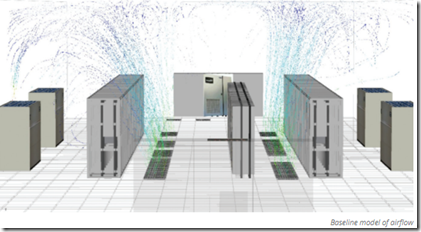There have been some interesting changes in the data center industry as executives move to Microsoft, eBay, and Apple. OSIsoft bagged the latest knowledge transfer, getting EPA ENERGYSTAR's Andrew Fanara to join their company.
OSIsoft® delivers the PI System®, the world’s leading highly scalable and secure infrastructure for the management of real-time data and events, and for connecting people with the right information, at the right time, to analyze, collaborate, and act. With more than 14,000 installations across oil & gas, power & utility, pharmaceuticals, data center, chemical, pulp & paper, metals & mining, and other process industries, the OSIsoft PI System® is the flexible foundation for establishing a culture of continuous improvement at the plant, across the enterprise, and throughout the value chain. Leveraging the PI System, companies improve asset performance, increase energy efficiency, mitigate risk, centralize knowledge, and optimize production to drive profitability and remain competitive.
To green the data center there are a few people who I try to have regular conversations with and one of them is Andrew Fanara. While skiing a month ago, Andrew let me know he was thinking of leaving the EPA to join the private sector, and was talking to a variety of companies that were interested in leveraging his experience in the data center industry.

We discussed many different types of companies that could use Andrew's skills and provide a good environment to work on developing new methods For example, a place where he could be more innovative and react faster to market and technology changes. #1 suggestion is to work at place that allows him to leverage his existing business network and make it stronger, and more influential.
One of the companies he was talking to was OSIsoft. I've known the OSIsoft executives about 5 years. And, have had the pleasure of going to the last four OSIsoft user conferences which is where I met Mike Manos. Even though Mike and I overlapped at Microsoft, we didn't connect until OSIsoft had an executive summit to discuss the energy industry.
I think highly of the OSIsoft capabilities, but to give Andrew another perspective, I called in a favor and had him talk to a Microsoft executive who could compare OSIsoft's capabilities as a technology partner vs. others. The Microsoft executive confirmed that OSIsoft is one of the top software vendors in the energy industry and are leaders in energy efficiency enabling better use of natural resources.
Many data center insiders are sad to see Andrew leave the EPA, but I see this as a great step in knowledge sharing. There will be new people who will take over Andrew's responsibilities and energy efficient data centers will continue with future specifications for storage and data center buildings. Andrew will take what he has learned at the EPA, and apply it to private industry.
At OSIsoft his new job will entail working on sustainability (green) programs through OSIsoft's global customer base which is currently at 14,000 installations, enabling Andrew to get his "hands dirty" with in depth projects.
More than 14,000 customer installations
- 65% of Global 500 process and manufacturing companies use the PI System
- 100% of the Global Top 5 Producers use the PI System
Strategic alliances




We would sometimes joke we eat dinner out more often (at data center events) than with our spouse and we'll be having our next dinner meeting in a week at OSIsoft's user conference Apr 26 - 28.
This year the Users Conference focuses on how real time information is the currency of the new decade, and we have a packed agenda that covers this in depth. We start with a great series of executive keynotes about innovation and solving real business problems-click on the titles to read the details.
Congratulations to OSIsoft and Andrew Fanara for connecting in an exciting area - corporate sustainability.

















